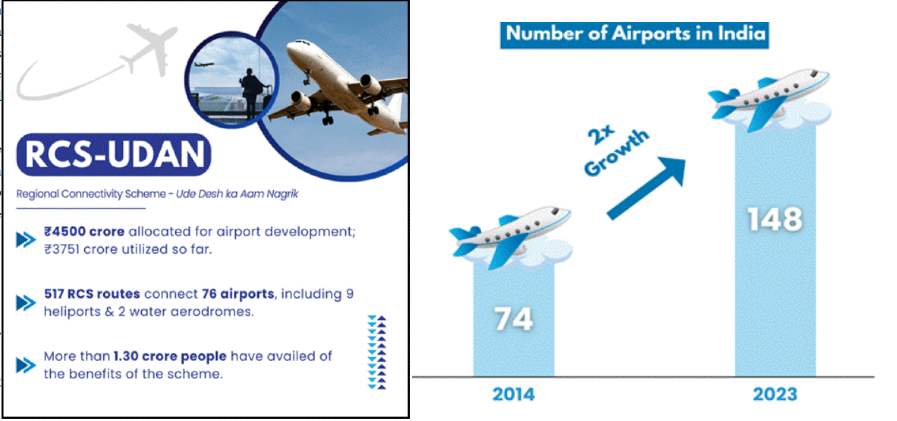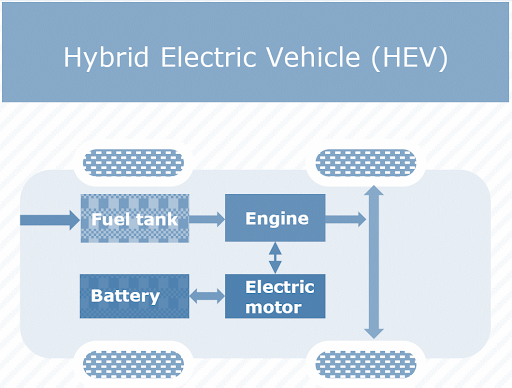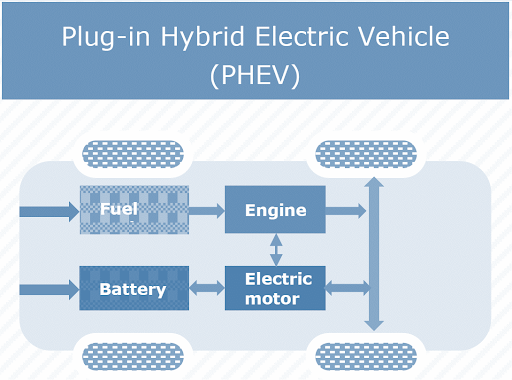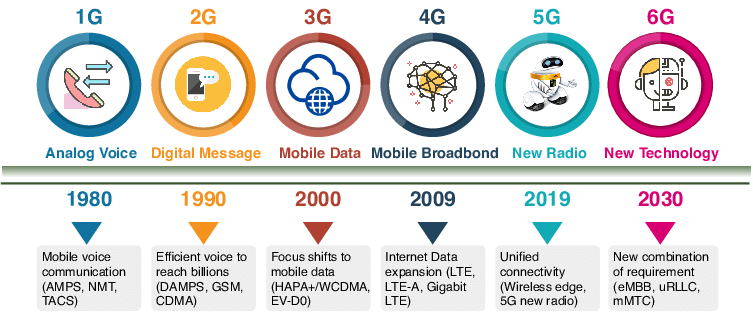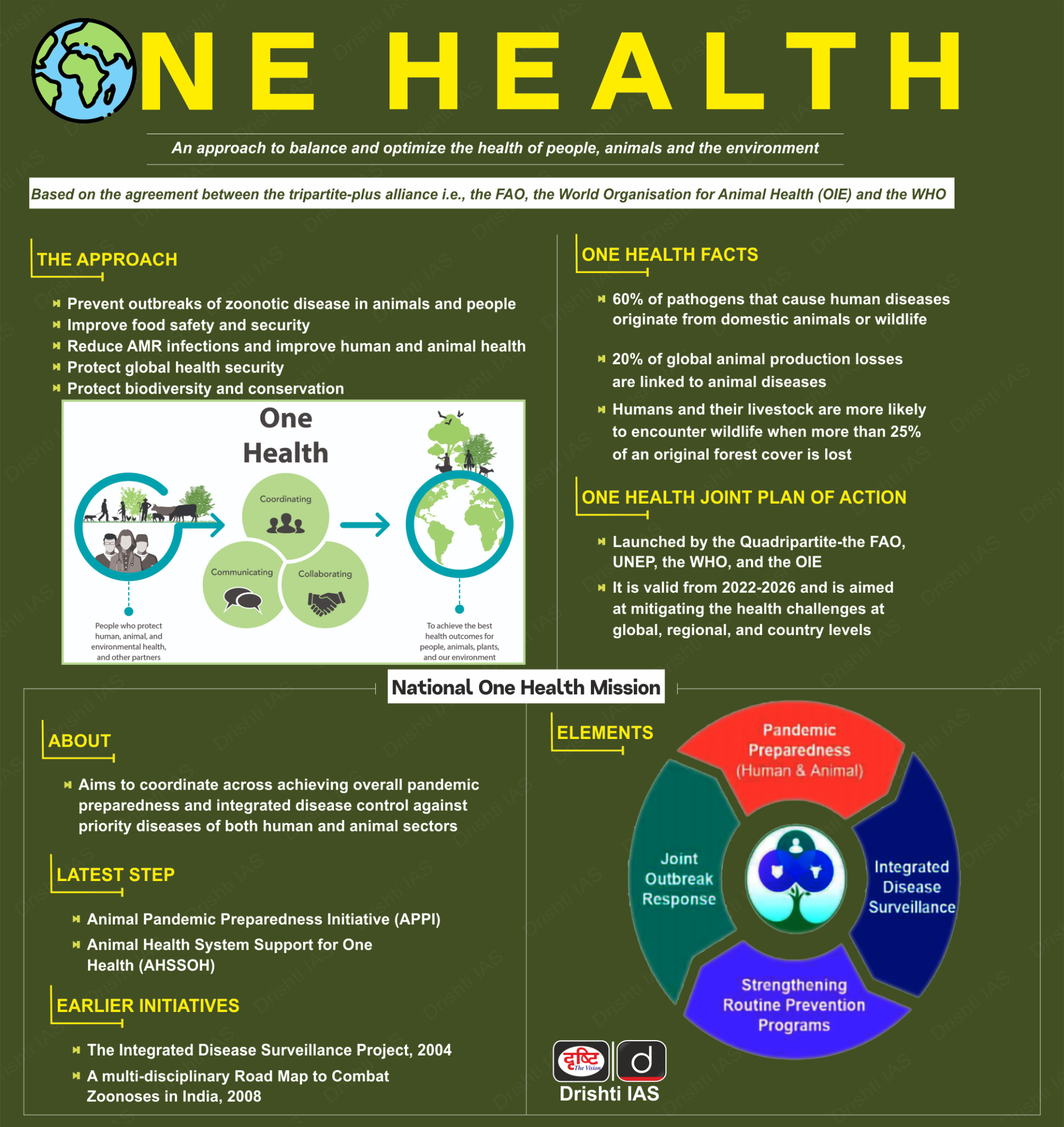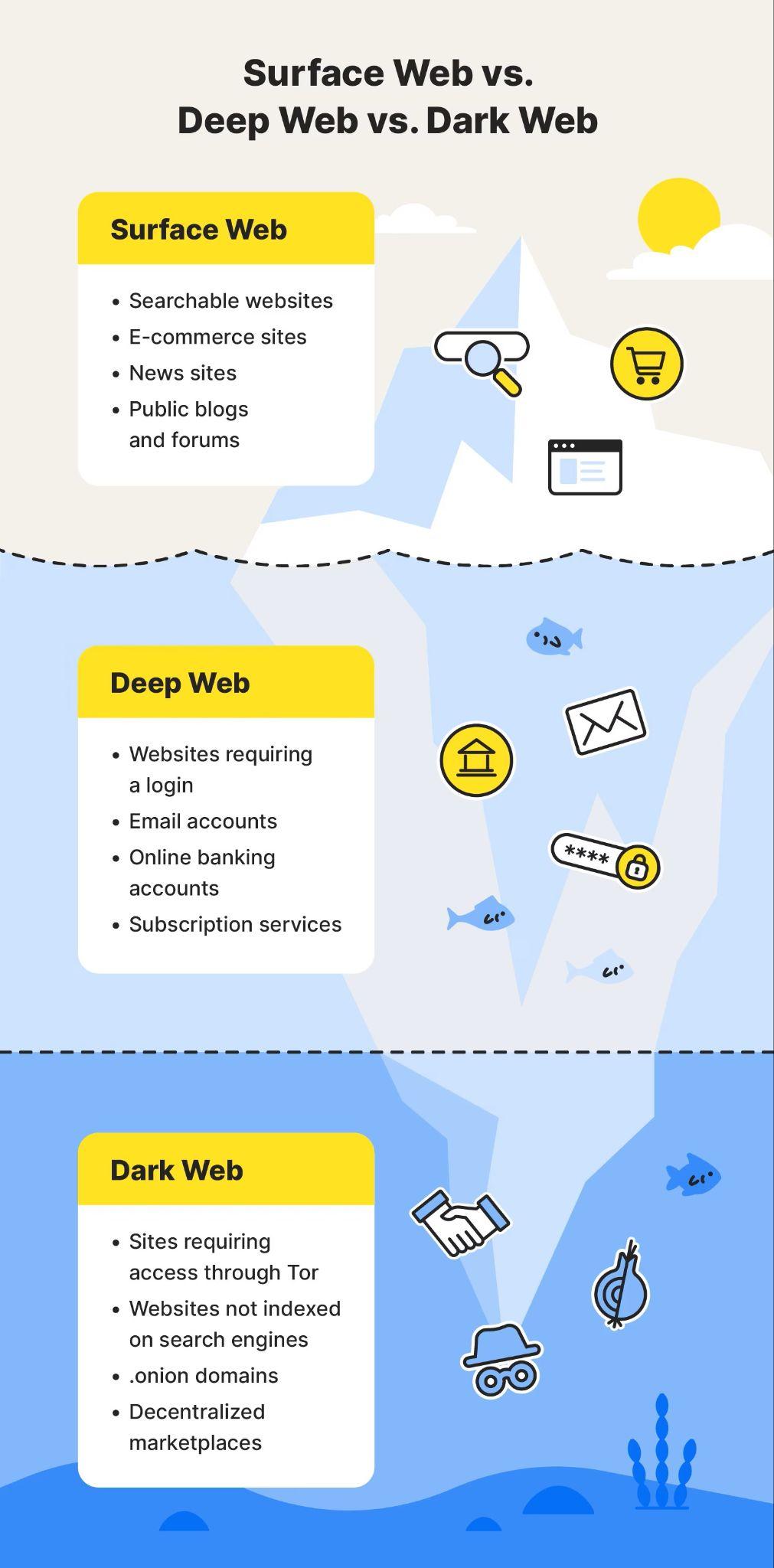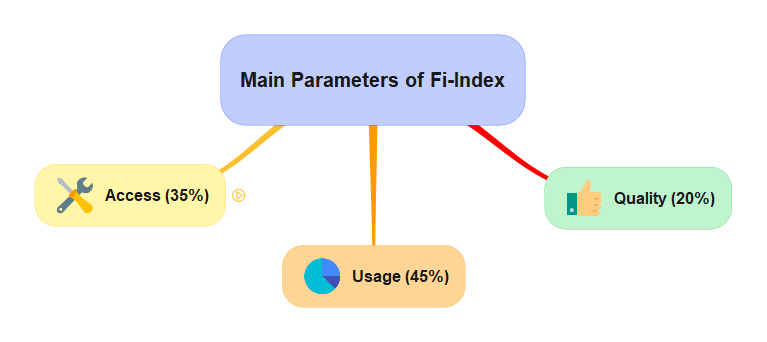Indian Economy
India's Ambitious Airport Expansion Plan
For Prelims: Airports Authority of India, UDAN Scheme, Directorate General of Civil Aviation
For Mains: Status of the Aviation Industry in India, Measures to Re-energize the Aviation Sector in India, Vision 2047
Why in News?
India plans to double its number of operational airports to 300 by 2047, driven by an eightfold increase in passenger traffic. This ambitious expansion involves developing existing airstrips and constructing new airports across the country.
What are the Factors Driving this Expansion?
- Development of Existing Airstrips: The Airports Authority of India (AAI) plans to develop 70 airstrips into airports capable of handling narrow-body aircraft like A320 or B737.
- Existing airstrips at Mandavi (Gujarat), Sultanpur (Uttar Pradesh), Tura (Meghalaya), and Chhindwara (Madhya Pradesh) can be upgraded for small aircraft. Nearly 40 airstrips are slated for development to accommodate smaller aircraft.
- New airports will be built if existing airstrips cannot be developed or if there is no civilian airport within 50 km.
- New greenfield airports may be constructed in Kota (Rajasthan), Parandur (Tamil Nadu), Kottayam (Kerala), Puri (Odisha), Purandar (Maharashtra), Car Nicobar, and Minicoy (Andaman and Nicobar Islands).
- Projected Passenger Traffic Growth: Passenger traffic is expected to increase eightfold, from 376 million to 3-3.5 billion annually by 2047. International traffic may constitute 10-12% of this growth.
-
The plan is part of Vision 2047, aiming to accommodate this massive increase in air travel demand.
-
- UDAN Scheme Implementation: Improving connectivity to tier-II and -III cities through schemes like UDAN (Ude Desh ka Aam Nagrik).
- In 2014, there were 74 operational airports, which has now increased to 148. Under the UDAN scheme, 68 underserved/unserved destinations, including 58 airports, 8 heliports, and 2 water aerodromes, have been connected. It has provided air connectivity to over 29 states/union territories.
- India's aviation infrastructure is the overcrowding of airports. With the surge in air travel demand, major airports across the country are operating beyond their designed capacities.
- Rising Income Levels: India's economy is projected to grow substantially by 2047, with per capita income expected to reach USD 18,000-USD 20,000. This economic growth is a crucial factor driving aviation expansion.
- Higher disposable incomes make air travel more affordable for a larger segment of the population.
- A growing middle class is likely to choose air travel over other modes of transportation for both business and leisure.
- Increased business activities and tourism resulting from economic growth will further boost demand for air travel.
- Anticipated Growth in Air Cargo: While passenger traffic is a primary focus, the expansion also considers the growing air cargo sector.
- E-commerce growth is driving demand for efficient air freight services.
- India aims to become a major player in the global air cargo market.
- New and expanded airports will have enhanced cargo-handling capabilities.
- Development of Major International Hubs: India aims to position its major airports as international hubs, competing with established hubs in the Middle East and Southeast Asia.
- This aspiration is driving the expansion and modernization of existing airports, as well as the development of new ones to attract more international airlines and passengers, increase transit traffic, and boost tourism and business travel to India.
- Under-Penetration of Air Travel: India's aviation market is one of the largest in the world, but air travel penetration is still low compared to developed countries.
-
The AAI's assessment provides interesting comparisons with other major markets: China (2019): 0.47 trips per capita per annum (GDP per capita: USD 10,144), USA: 1.2-1.3 trips per capita per annum (GDP per capita: USD 20,000) and India's projection for 2047: 1 trip per capita per annum (Estimated GDP per capita: USD 18,000-USD 20,000)
-
This creates a huge growth opportunity as income levels rise and air travel becomes more accessible, there is expected to be a surge in demand.
-
The expansion plan is designed to anticipate and prepare for this expected growth in air travel adoption.
-
Airports Authority of India (AAI)
- The AAI is a statutory body under the Directorate General of Civil Aviation, Ministry of Civil Aviation, Government of India. It was formed in 1995, by merging the National Airports Authority and the International Airports Authority of India.
- It also provides Air Traffic Management Services over Indian airspace and adjoining oceanic areas.
- The functions of AAI include airport development, airspace control, passenger and cargo terminal management, and provision of communication and navigation aids.
- AAI provides air navigation services over 2.8 million square nautical miles of air space.
What are the Challenges for the Expansion of Airports in India?
- Land Scarcity: Increasing urbanization is exacerbating the land shortage, particularly in larger towns and cities. The cost and availability of land may impact the viability of many airport projects.
-
Massive Investment Requirements: India needs more than USD 40 billion in airport development by 2047.
-
Total expenditure could reach USD 70-80 billion when including upgrades to airspace infrastructure and ground transportation.
-
- Infrastructure Constraints: Many existing airports are reaching or have reached saturation, including critical hubs like Mumbai. Several cities urgently need new airports or significant expansions of existing ones; this can hinder the development process of new airports.
- Air Navigation Services (ANS) Infrastructure: Significant investments (possibly up to USD 6-7 billion) are needed in ANS technology, people, and training.
- Surface Transportation: Investment required in ground transportation to/from airports could be almost as much as that in the airports themselves.
- Lack of adequate surface connectivity could impact the viability and convenience of new airports.
- Environmental Concerns: Airport expansions often face opposition due to potential environmental impacts, including noise pollution and habitat disruption.
Way Forward
- Integrated Land Use Planning: Create special economic zones around airports, similar to "Aerotropolis" concept, which combines the airport with business, logistics, and residential areas. This can help justify land acquisition and maximize economic benefits.
- Multi-Modal Transportation Integration: Develop integrated transportation hubs like Frankfurt Airport's long-distance train station, which connects the airport directly to the national rail network. This addresses surface transportation challenges and enhances airport accessibility.
- Green Airport Design: Prioritize sustainable and environmentally friendly airport designs. Adopt Oslo Airport's approach of using sustainable materials and other eco-friendly technologies.
- Oslo Airport in Norway uses biomass heating systems to combat harsh Nordic winters, utilising organic materials for warmth.
- Design airports with flexibility for future expansion and changing needs and adaptations to changing aviation trends.
- Public-Private Partnerships (PPP): Leverage PPP models to attract investment and expertise. Develop a robust PPP framework similar to build-operate-transfer (BOT) model This can help address the massive investment requirements while ensuring efficient operation.
- Capacity Enhancement of Existing Airports: Maximizing capacity through technological and operational improvements. This includes implementing advanced air traffic management systems and optimizing runway usage, to increase capacity without building new runways.
- Smart Airport Technologies: Leverage cutting-edge technologies to enhance efficiency and passenger experience. Adopt technologies like biometric boarding and automated baggage handling systems to improve operational efficiency and capacity.
|
Drishti Mains Question: Q. Discuss India's Vision 2047 for airport infrastructure expansion, and how does it aim to meet the anticipated increase in passenger traffic? |
UPSC Civil Services Examination, Previous Year Questions (PYQs)
Mains
Q. Examine the development of Airports in India through joint ventures under Public–Private Partnership (PPP) model. What are the challenges faced by the authorities in this regard? (2017)


Indian Economy
Push for Hybrid Electric Vehicles
For Prelims: Battery Electric Vehicles (BEVs), Hybrid Vehicles. Faster Adoption and Manufacturing of Electric Vehicles (FAME) Scheme II, National Electric Mobility Mission Plan (NEMMP), National Mission on Transformative Mobility and Battery Storage, Go Electric campaign, Production Linked Incentive (PLI) scheme.
For Mains: Hybrid Vehicles as alternative to Electric Vehicles, Electric Vehicles Manufacturing and Adoption - challenges and opportunities, EVs and Global Goals of Net Zero Emission.
Why in News?
Recently, the state government of Uttar Pradesh announced the waiver of registration fees for strong hybrid and plug-in hybrid electric vehicles (EVs).
- This move aligns Uttar Pradesh with Tamil Nadu and Chandigarh, which also offer incentives to promote cleaner alternatives to petrol and diesel vehicles.
What is a Hybrid Electric Vehicle (HEV)?
- About Electric Vehicle:
- An Electric Vehicle (EV) is defined as a vehicle that can be powered by an electric motor that draws electricity from a battery and is capable of being charged from an external source.
- Types of Elective Vehicles (EVs):
- Battery Electric Vehicle (BEV): These are fully powered by electricity. These are more efficient compared to hybrid and plug-in hybrids.
- Fuel Cell Electric Vehicle (FCEV): Electric energy for EVs is produced from chemical energy. For Example, a Hydrogen FCEV.
- Hybrid Electric Vehicle (HEV): It is also called Strong Hybrid EV. The vehicle uses both the internal combustion (usually petrol) engine and the battery-powered motor powertrain.
-
The petrol engine is used both to drive and charge when the battery is empty. These vehicles are not as efficient as fully electric or plug-in hybrid vehicles.
-
- Plug-in Hybrid Electric Vehicle (PHEV): These use both an internal combustion engine and a battery charged from an external socket (they have a plug).
- Vehicle’s battery can be charged with an external electricity source only and not by engine.
- PHEVs are more efficient than HEVs but less efficient than BEVs.
- PHEVs can run in at least 2 modes:
- Hybrid Mode, in which both electricity and petrol/diesel are employed.
- All-electric Mode, in which the motor and battery provide all the car’s energy.
- Significance of Hybrid EVs:
-
Practicality in the Medium Term (5-10 years): Since they do not require an external charging infrastructure, hybrids are seen as a practical and viable option for the medium term as India gradually moves towards full electrification of its vehicle fleet. This transition is expected to take 5-10 years.
-
Cost of Ownership Perspective: Hybrids are considered cost-effective as several state governments are giving waivers on registration fees, RTO fees etc.
- For Example, UP government has announced a 100% waiver on registration fees for strong hybrids, potentially saving buyers up to Rs 3.5 lakh.
- Hybrid cars have better fuel economy compared to conventional fuel cars leading to cost savings for drivers over time.
- Critical for Decarbonisation Drive: Hybrid vehicles play a role in India's decarbonisation efforts. Hybrid vehicles have lower total (well-to-wheel, or WTW) carbon emissions than both electric and traditional ICE vehicles for similarly sized vehicles.
- Hybrids emit 133 g/km of CO2, while EVs emit 158 g/km. This translates to hybrids being 16% less polluting than the corresponding EV.
- These are 176 g/km for petrol and 201 g/km for diesel vehicles.
-
Note
- In February 2023, the Tamil Nadu government announced incentives in the form of road tax, registration, and permit fee exemptions for strong hybrids.
- The Chandigarh administration also offers road tax rebate on strong hybrid vehicles priced below Rs 20 lakh.
What are Government of India’s Initiatives to Promote EV Adoption?
- Faster Adoption and Manufacturing of Electric Vehicles (FAME) Scheme II
-
National Mission on Transformative Mobility and Battery Storage
-
Production Linked Incentive (PLI) scheme: Incentives for the manufacturing of EVs and components
- Ministry of Power's Revised Guidelines on Charging Infrastructure: At least one charging station to be present in a grid of 3 km and at every 25 km on both sides of the highways.
- Amendment to Model Building Bye-laws, 2016 (MBBL): Mandatory to set aside 20% of the parking space for EV charging facilities in residential and commercial buildings.
- India’s support to the global EV30@30 campaign
What are the Challenges in Adoption of Electric Vehicles in India?
- Higher Cost: High upfront cost is a primary barrier for electric vehicles compared to conventional internal combustion engine (ICE) vehicles. The cost of batteries, which is a significant portion of an EV's price, remains high, making EVs less affordable for many consumers, especially in a price-sensitive market like India.
-
Lack of Clean Energy: Much of India's electricity is generated from burning coal, thus relying on coal to generate power for all the EVs would defeat the purpose of reducing carbon emissions through EV adoption.
-
Supply Chain Issues: Global supply chain issues for lithium-ion batteries are significant, with over 90% of lithium production concentrated in countries like Chile, Argentina, Bolivia, Australia, and China.
- India's demand for these batteries is expected to grow over 30% annually until 2030, requiring over 50,000 tonnes of lithium for EV battery production. This reliance makes India heavily dependent on imports from a few countries.
- Underdeveloped Charging Infrastructure: India's current charging infrastructure is not sufficient for the increased demand for EVs, with only 12,146 public EV charging stations mostly in urban areas, it lags far behind China, which has 1.8 million electric charging stations.
- An analysis by the World Bank (WB) has found that investing in charging infrastructure is between four and seven times more effective in ensuring EV adoption compared with providing upfront purchase subsidies.
- Suboptimal Battery Technology: Current EV batteries have limited capacity and voltage, which hinders driving range. This, along with limited charging stations, aerodynamic drag, and vehicle weight, makes it difficult for drivers to travel long distances without recharging.
-
Persistent Resistance to Change: Indian consumers persistently resist adopting EVs due to lack of awareness and general reluctance to embrace new technologies, especially in rural areas, despite the long-term economic and environmental benefits.
Upsurge in Hybrid Vehicle Sales:
- Sales data reveals a significant increase in HEV adoption in India. Strong hybrids grew from 0.5% to 2.2% of the total market share between FY23 and FY24.
- This trend aligns with global observations. Hybrid sales are surging internationally, particularly in the US and Europe, where they are outpacing BEV growth.
Way Forward
- Addressing Cost Concerns:
- Government needs to focus on providing demand incentives and targeted subsidies, especially for middle-income and budget segments, developing a network of battery swapping stations to reduce charging time and alleviate range anxiety and more focus on promoting the adoption of electric two-wheelers to create a larger EV user base.
- Enhancing Charging Infrastructure:
-
There is a need to prioritise the installation of fast-charging stations along major highways and urban centres, and to integrate renewable energy sources like solar and wind power to ensure EVs contribute to reduced emissions.
-
-
Boosting Battery Technology and Supply Chain:
-
There is a need to incentivize the establishment of domestic lithium-ion cell manufacturing facilities to reduce import dependence and implement efficient battery recycling programs to address environmental concerns and reduce reliance on virgin raw materials.
-
-
Promoting Consumer Awareness and Education:
-
Targeted public awareness campaigns should be conducted to address misconceptions and highlight the benefits of EVs. There should be focus on rural outreach programs to promote the adoption of electric two-wheelers and three-wheelers for agricultural and transportation needs.
-
UPSC Civil Services Examination, Previous Year Questions (PYQs)
Prelims
Q. In the cities of our country, which among the following atmospheric gases are normally considered in calculating the value of Air Quality Index? (2016)
- Carbon dioxide
- Carbon monoxide
- Nitrogen dioxide
- Sulphur dioxide
- Methane
Select the correct answer using the code given below:
(a) 1, 2 and 3 only
(b) 2, 3 and 4 only
(c) 1, 4 and 5 only
(d) 1, 2, 3, 4 and 5
Ans: (b)
Exp:
Q. With reference to the Agreement at the UNFCCC Meeting in Paris in 2015, which of the following statements is/are correct? (2016)
- The Agreement was signed by all the member countries of the UN and it will go into effect in 2017.
- The Agreement aims to limit the greenhouse gas emissions so that the rise in average global temperature by the end of this century does not exceed 2ºC or even 1.5ºC above pre-industrial levels.
- Developed countries acknowledged their historical responsibility in global warming and committed to donate $ 1000 billion a year from 2020 to help developing countries to cope with climate change.
Select the correct answer using the code given below:
(a) 1 and 3 only
(b) 2 only
(c) 2 and 3 only
(d) 1, 2 and 3
Ans: (b)
Mains
Q. How is efficient and affordable urban mass transport key to the rapid economic development in India? (2019)


Indian Economy
Women's Representation in Corporates
For Prelims: India Employment Report 2024, Unemployment rates, Institute for Human Development (IHD), International Labour Organisation (ILO), Labour Force Participation Rate (LFPR).
For Mains: India Employment Report 2024: ILO, Major Issues Related to Unemployment in India.
Why in News?
Recently, a report by the National Council of Applied Economic Research (NCAER) has revealed that women's representation in top management and company boards in India has increased but still lags behind the global average.
- In another study by the World Bank, it has been highlighted that India needs to assign a specific priority sector tag for women-led rural enterprises for easier access to credit.
National Council of Applied Economic Research (NCAER)
- It is India's leading independent economic research institute. Founded in 1956, it focuses on practical economic analysis through surveys and data collection.
Priority Sector Lending
- The RBI mandates banks to lend a certain portion of their funds to specified sectors, like agriculture, Micro, Small and Medium Enterprises (MSMEs), export credit, education, housing, social infrastructure, and renewable energy among others.
- All scheduled commercial banks and foreign banks (with a sizable presence in India) are mandated to set aside 40% of their Adjusted Net Bank Credit (ANDC) for lending to these sectors.
- Regional rural banks, cooperative banks and small finance banks have to allocate 75% of ANDC to PSL.
- The idea behind this is to ensure that adequate institutional credit reaches some of the vulnerable sectors of the economy, which otherwise may not be attractive for banks from the profitability point of view.
What are the Key Findings of the NCAER on Women's Representation in Indian Corporates?
- The share of Women in Top Management Positions increased from nearly 14% in FY14 to about 22% in FY23.
-
The share of Women on Company Boards in India increased from around 5% in FY14 to nearly 16% in FY23.
- The share of Women in Middle and Senior Management Roles in India is only 20% with a global average of 33%.
- Share of Women Representation in NSE Listed Firms:
- Almost 60% of the firms studied, including 5 of the top 10 NSE-listed firms by market capitalization, did not have any women in their top management teams as of March 2023.
- About 10% of the firms had just one woman.
Note
- As per the World Bank data, women's global Labour Force Participation Rate (LFPR) is slightly above 50%, while men's is at 80%.
- Labour Force Participation Rate (LFPR) is the ratio between the total labour force divided by the total working-age population. The working age population refers to people aged 15 to 64.
- Women’s LFPR in India has increased from 23% in 2017 to around 37% in 2023.
What are the Key Recommendations of the World Bank on Boosting Employment Opportunities for Women in India?
- Assign Priority Sector Tag for Women-led Rural Enterprises: The World Bank study found that loans to women's micro-enterprises are not prioritised separately.
-
It suggests creating a new sub-category within the micro-enterprise sector to cater specifically to women-owned ventures with high growth potential.
-
-
Bridging the Digital Divide: The report emphasised the need to equip women entrepreneurs with digital literacy, with training programs for digital bookkeeping and payment systems to enhance their financial management capabilities.
-
Graduation Programs for Sustainable Growth: The report suggests implementing graduation programs to help micro-loan borrowers transition to mainstream commercial finance.
-
It also advocates for the strategic use of district-level data analytics by stakeholders, including banks, to make informed decisions and effectively promote women's entrepreneurship in rural India.
-
-
Strengthening the Institutional Ecosystem: The report recommends decentralising incubation centres in rural areas for mentorship and business support.
-
It also suggests developing women's entrepreneur associations to foster community and peer learning.
-
|
Drishti Mains Question: Discuss the state of Women's workforce participation in Indian corporates. Also, suggest measures to enhance their participation in the workforce. |
UPSC Civil Services Examination, Previous Year Questions (PYQs)
Prelims
Q. Disguised unemployment generally means (2013)
(a) large number of people remain unemployed
(b) alternative employment is not available
(c) marginal productivity of labour is zero
(d) productivity of workers is low
Ans: (c)
Mains
Q. Most of the unemployment in India is structural in nature. Examine the methodology adopted to compute unemployment in the country and suggest improvements. (2023)


Governance
Telecommunications Act 2023
For Prelims: Indian Telegraph Act, 1885, Telecommunication services, Telecommunications Act, 2023, TRAI, Universal Service Obligation Fund, Digital Bharat Nidhi, Prime Minister Wi-Fi Access Network Interface, Bharatnet project, Production Linked Incentive (PLI) Scheme, Digital India Initiative
For Mains: Telecommunications Act, 2023, Challenges in Telecommunication Act
Why in News?
Recently, the central government notified certain sections of the Telecommunications Act, of 2023.
- It aims to update and unify telecom laws, by replacing outdated laws like the Indian Telegraph Act of 1885, the Indian Wireless Telegraph Act, 1933 and Telegraph Wires (Unlawful Possession) Act, 1950.
What are the Salient Features of the Telecommunications Act 2023?
- Definitions: The Act clearly defines its scope, thereby reducing uncertainties.
- Messages sent through internet-based messaging service providers such as WhatsApp, Signal, and Telegram, as well as those that are encrypted (except Over-the-Top (OTT) services), are within the Act's ambit.
- Right of Way (RoW) Framework: The Act provides an effective RoW framework, both on public and private property.
- The definition of public entities has been broadened to include government agencies, local bodies, and PPP projects like airports, seaports, and highways.
- Public entities shall be obligated to provide right of way except in special circumstances.
- Common Ducts: In line with PM Gati Shakti's vision, the law provides for the Central Government to establish common ducts and cable corridors.
- National Security Measures: Section 20 (2) of the Act allows the government to stop the transmission of any message in the interest of public safety and during a public emergency.
- This majorly expands the number of government entities that may be able to intercept messages.
- Digital Bharat Nidhi: With the new Act, the Universal Service Obligation Fund (USOF) will become Digital Bharat Nidhi, which can be used to fund research and development and pilot projects instead of just supporting the establishment of telecom services in rural areas.
- The Act also provides a legal framework for Regulatory Sandbox to facilitate innovation and deployment of new technology.
- Protection of Users: Commercial messages sent without the user's consent may lead to the relevant operator facing a fine and being banned from providing services.
- Establishing Do Not Disturb registers has been made mandatory for operators.
- Having more than 9 SIM cards will attract fines up to Rs 2 lakh. The limit is being reduced to six for residents of Jammu and Kashmir and the Northeast.
Note
- In 2019, the government informed the Lok Sabha that 10 central agencies including the Central Bureau of Investigation (CBI), the Enforcement Directorate (ED) and the Intelligence Bureau (IB) can intercept telephone communications, provided they have the Union home secretary’s prior permission to do so.
- The section 20(2) allows the Centre or states to take temporary possession of any telecom service or network during a public emergency, including disaster management, or in the interest of public safety.
Historical Framework (1885-2023)
- The Indian telecom sector shaped by three laws namely The Indian Telegraph Act, 1885; The Indian Wireless Telegraphy Act, 1933; and The Telegraph Wires (Unlawful Possession) Act, 1950 has undergone a transformative legal evolution.
- The 1950 Act, addressing unlawful possession of telegraph wires, was recently repealed by the Repealing and Amending Act, 2023, emphasising regulatory adaptability.
Regulatory Authorities
- The TRAI Act, 1997, instrumental in tariff regulation, established both the TRAI and the Telecom Disputes Settlement and Appellate Tribunal (TDSAT).
- Licensing authority, however, remains vested in the central government.
What are the Merits and Demerits of the Telecommunications Act, 2023?
- Merits:
- Navigates Different Communication Technologies: The Act is poised to navigate generations of communication technologies, including innovations like voice calls, messaging, video calls, wearables, and Industry 4.0.
- The inseparable integration of computing and technologies like AI, IoT, and quantum computing is anticipated in the future of communication.
- Promotion to R&D: Act will promote competition and mobilising resources for research and development and pilot projects under Digital Bharat Nidhi.
- Extensive Juridiction of Law: As per Act, the rules extend to the whole of India and any offence committed or contravention made outside India by any person, as provided in this Act.
- Promotion of Verifiable User: Act mandates telecom operators use verifiable biometric identification (Aadhaar) for new SIMs/connections.
- Prohibition on commercial messaging (by establishing Do Not Disturb registers) without the user's consent provided protection from spam.
- Navigates Different Communication Technologies: The Act is poised to navigate generations of communication technologies, including innovations like voice calls, messaging, video calls, wearables, and Industry 4.0.
- Demerits:
-
Unrestricted Government Authority: The Act grants the government authorities extensive powers to intercept and disclose messages without the procedural safeguards recommended in the Anuradha Bhasin vs Union of India case.
-
Privacy and Security Risks: By requiring access to encrypted messages, the Act poses a serious threat to the security and privacy of communications.
- The Act requires telecom operators to use verifiable biometric identification (Aadhaar) for new SIMs/connections, raising concerns about individual privacy.
- Grey Area of Messaging: Messages sent through Over-the-Top (OTT) services are not considered within the scope of the Act. Messaging OTTs will remain a grey area.
- Reducing rate of Telecom Penetration in Rural Area by diverting fund of Universal Service Obligation Fund (USOF) for R&D and pilot projects instead of targeting establishment of telecom services in rural areas.
-
Government Initiatives in Telecom Sector
|
Drishti Mains Question: Q. Discuss the provisions of Telecommunications Act 2023 and associated issues. Also suggest measures to address them. |
UPSC Civil Services Examination, Previous Year Question (PYQ)
Prelims:
Q. In India, which of the following review the Independent regulators in sectors like telecommunications, insurance, electricity, etc.? (2019)
- Ad Hoc Committees set up by the Parliament
- Parliamentary Department Related Standing Committees
- Finance Commission
- Financial Sector Legislative Reforms Commission
- NITI Aayog
Select the correct answer using the code given below:
(a) 1 and 2
(b) 1, 3 and 4
(c) 3, 4 and 5
(d) 2 and 5
Ans: (a)
Q. In India, the term “Public Key Infrastructure” is used in the context of (2020)
(a) Digital security infrastructure
(b) Food security infrastructure
(c) Health care and education infrastructure
(d) Telecommunication and transportation infrastructure
Ans: (a)
Q. Which of the following is/are the aims/aims of the “Digital India” Plan of the Government of India? (2018)
- Formation of India’s own Internet companies like China did.
- Establish a policy framework to encourage overseas multinational corporations that collect Big Data to build their large data centres within our national geographical boundaries.
- Connect many of our villages to the Internet and bring Wi-Fi to many of our schools, public places and major tourist centres.
Select the correct answer using the code given below:
(a) 1 and 2 only
(b) 3 only
(c) 2 and 3 only
(d) 1, 2 and 3
Ans: (b)


Biodiversity & Environment
Use of Green Funds for Road Works
For Prelims: Central Pollution Control Board, National Green Tribunal, National Clean Air Programme, Supreme Court, National Air Monitoring Programme
For Mains: Environmental Governance and Fund Utilisation, Air Quality Improvement
Why in News?
The Central Pollution Control Board (CPCB) has been using funds meant for tackling air pollution to finance road repairs and paving works.
- The National Green Tribunal (NGT) has expressed concern over this diversion of funds, calling it potentially a "gross misuse and serious financial irregularity."
- In response to concerns about the effective spending of released funds and ongoing scrutiny from the NGT regarding inappropriate project allocations, the government is reviewing clean air action plans for 131 cities to speed up the use of funds allocated under the National Clean Air Programme(NCAP).
What is the Issue of CPCB's Use of Green Funds for Road Works?
- Green Funds in Question:
-
Environment Protection Charge (EPC): Collected as a 1% charge on diesel vehicles with an engine capacity of 2000 CC or above in Delhi-NCR, based on a 2016 Supreme Court order.
-
Environment Compensation (EC): Collected from compensation imposed by the NGT and managed by CPCB.
- These funds were created with the specific purpose of tackling air pollution and other environmental issues. However, their recent use for road works has led to legal scrutiny.
-
- CPCB's Justification: The CPCB argues that road repairs and paving works directly contribute to reducing dust pollution, a significant contributor to poor air quality in urban areas.
- They claim this funding approach aligns with the National Clean Air Programme (NCAP) 2019, which adopts a convergence model for implementing clean air city action plans.
- The CPCB states that it uses these funds as gap funding for air quality improvement projects when they are not supported by other schemes.
- The CPCB has highlighted the case of funding allocated Rs 15.9 crore out of Rs 98.9 crore EPC funds to Ghaziabad Municipal Corporation for eight road projects, ensuring no other scheme funded these works.
- This allocation, approved by relevant committees, demonstrates CPCB's use of funds for road works to improve air quality.
- They claim this funding approach aligns with the National Clean Air Programme (NCAP) 2019, which adopts a convergence model for implementing clean air city action plans.
- NGT's Concerns and Scrutiny: NGT is concerned about potential misuse and financial irregularities in diverting air quality improvement funds to road repairs.
-
If CPCB continues this practice, it may lead to other municipal bodies seeking similar allocations, raising fairness and fund utilization issues.
- The NGT is yet to decide on the permissibility of using these funds, this decision will also impact the future use of funds by the CPCB and could influence policy decisions on environmental protection and infrastructure development projects.
- Additionally, the issue will be considered in the context of poor air quality in 53 cities, potentially linking it to wider air quality management strategies.
-
National Clean Air Programme (NCAP)
- Launched in 2019: The NCAP aims to reduce particulate matter pollution by 40% by 2025-26 across 131 selected cities.
- Selection Criteria: These cities were designated as non-attainment areas for failing to meet national air quality standards for five consecutive years between 2011 and 2015.
- Funding Overview: A total of Rs 1,165.48 crore has been allocated to 82 cities from 2019-20 to 2023-24, with 51% (Rs 830.04 crore) reportedly spent by the states.
What are the Key Focus Areas for Review?
- Dust Control Measures: Cities will be urged to implement effective strategies for controlling dust pollution.
- Electric Vehicle Infrastructure: Setting up charging stations for electric vehicles to promote cleaner transport options.
- Public Transport Improvements: Enhancements in public transport systems to reduce vehicular emissions.
- Waste Management Practices: Effective waste management to prevent burning and other practices that contribute to air pollution.
- Urban Greening Initiatives: Increasing green cover to improve air quality and mitigate pollution.
What are the Key Facts About the Central Pollution Control Board?
- Establishment and Legal Framework: The CPCB is a statutory organization constituted in 1974 under the Water (Prevention and Control of Pollution) Act, 1974. It was further entrusted with functions under the Air (Prevention and Control of Pollution) Act, 1981.
- It also provides technical services to the Ministry of Environment and Forests under the Environment (Protection) Act, 1986.
- Principal Functions:
- Water Pollution: Promote cleanliness of streams and wells by preventing, controlling, and abating water pollution.
- Air Pollution: Improve air quality by preventing, controlling, or abating air pollution in the country.
- Air Quality Monitoring:
- National Air Monitoring Programme (NAMP): Established to determine air quality status and trends, control pollution from various sources, and provide data for industrial siting and town planning.
- Monitoring Station: Automatic monitoring station at ITO Intersection in New Delhi regularly monitors: Respirable Suspended Particulate Matter (RSPM), Carbon Monoxide (CO), Ozone (O3), Sulphur Dioxide (SO2), Nitrogen Dioxide (NO2), and Suspended Particulate Matter (SPM).
- Water Quality Monitoring: The Water (Prevention and Control of Pollution) Act, 1974 aims to maintain and restore the wholesomeness of water bodies. CPCB collects, collates, and disseminates technical and statistical data related to water pollution.
National Green Tribunal (NGT)
- The NGT was established in 2010 under the National Green Tribunal Act, 2010 for quick resolution of environmental cases, enforcement of legal rights, and providing relief for damages.
- It has expertise in handling environmental disputes and is not bound by the Code of Civil Procedure, 1908, but shall be guided by principles of natural justice.
- The Tribunal aims to provide speedy environmental justice and reduce the burden on higher courts, with a mandate to dispose of cases within 6 months.
- The Tribunal has powers to review its own decisions. If this fails, the decision can be challenged before the Supreme Court within ninety days.
- The Tribunal's Principal Place of Sitting is New Delhi, with Bhopal, Pune, Kolkata, and Chennai as the other four sitting places.
|
Drishti Mains Question: Q. Explain the concerns raised by the National Green Tribunal regarding the use of environmental funds for other works by the CPCB. How does this issue highlight challenges in financial management of environmental projects? |
UPSC Civil Services Examination Previous Year Question (PYQ)
Prelims
Q. How is the National Green Tribunal (NGT) different from the Central Pollution Control Board (CPCB)? (2018)
- The NGT has been established by an Act whereas the CPCB has been created by an executive order of the Government.
- The NGT provides environmental justice and helps reduce the burden of litigation in the higher courts whereas the CPCB promotes cleanliness of streams and wells, and aims to improve the quality of air in the country.
Which of the statements given above is/are correct?
(a) 1 only
(b) 2 only
(c) Both 1 and 2
(d) Neither 1 nor 2
Ans: (b)
Q. The National Green Tribunal Act, 2010 was enacted in consonance with which of the following provisions of the Constitution of India? (2012)
- Right to healthy environment, construed as a part of Right to life under Article 21
- Provision of grants for raising the level of administration in the Scheduled Areas for the welfare of Scheduled Tribes under Article 275(1)
- Powers and functions of Gram Sabha as mentioned under Article 243(A)
Select the correct answer using the codes given below:
(a) 1 only
(b) 2 and 3 only
(c) 1 and 3 only
(d) 1, 2 and 3
Ans: (a)


Important Facts For Prelims
Defamation Case Against Wikipedia
Why in News?
Recently, news agency Asian News International (ANI) has moved the Delhi High Court against Wikipedia for allowing allegedly defamatory content on ANI's Wikipedia page.
- The petitioner has sought damage compensation of Rs 2 crore, alleging that the content is "palpably false" and defamatory and that its reputation was being tarnished and goodwill discredited.
Wikipedia
- It is a free online encyclopaedia founded by Jimmy Wales and Larry Sanger in 2001.
- It provides freely editable content on various branches of knowledge, aiming to benefit readers by offering information and guidance through linked articles.
What is the Legal Basis for ANI's Case Against Wikipedia?
- Section 2(1)(w) of the Information Technology (IT) Act, 2000:
- It defines an "intermediary" as anyone who handles electronic records on behalf of others. This includes telecom, network, and internet service providers, web-hosting services, search engines, online payment sites, auction sites, marketplaces and cyber cafes.
- Sections 79 of IT Act, 2000 (Safe Harbour Clause):
- It provides legal protection to intermediaries from liability for any third-party content or information hosted or transmitted through their platforms.
- Section 79(2)(b): To avail the safe harbour protection, the intermediary must fulfil conditions, such as:
- It should observe due diligence while discharging their duties.
- It should not initiate the transmission, select the receiver of transmission or modify the information contained in the transmission.
- It should comply with the directions of the government such as Intermediary Guidelines and Digital Media Ethics Code, 2021 or court orders.
- Section 79(3) states that the protection will not be applicable if the intermediary, after being notified by the government, fails to promptly remove or disable access to the specified material.
- Section 79(2)(b): To avail the safe harbour protection, the intermediary must fulfil conditions, such as:
- It provides legal protection to intermediaries from liability for any third-party content or information hosted or transmitted through their platforms.
- Sections 3 of IT Act, 2000:
- It allows subscribers to authenticate electronic records using digital signatures and requires the use of an asymmetric crypto system and hash function for authentication.
- Verification of electronic records can be done using the public key of the subscriber, where the private key and public key form a unique key pair.
Note
- Section 230 of the US Communications Decency Act, similar to Section 79 of the IT Act, provides that providers or users of interactive computer services are not considered the publishers or speakers of information provided by others.
What were the Previous Supreme Court Rulings Related to Wikipedia?
- Ayurvedic Medicine Manufacturers Organisation of India v. Wikipedia Foundation Case, 2022:
- In this Supreme Court dismissed petitions alleging a Wikipedia article was defamatory, advising the petitioners to edit the article or seek other legal remedies.
- Hewlett Packard India Sales v. the Commissioner of Customs Case, 2023:
- The SC observed that adjudicating authorities had extensively referred to online sources like Wikipedia to support their conclusions.
- It cautioned against using crowd-sourced and user-generated platforms like Wikipedia for legal dispute resolution, as they can promote "misleading information."
What are Government Initiatives Related to Information Technology (IT)?
Read more: Information Technology Amendment Rules, 2023, New IT Rules and Social Media
UPSC Civil Services Examination, Previous Year Questions (PYQs)
Q. In India, it is legally mandatory for which of the following to report on cyber security incidents? (2017)
- Service providers
- Data centres
- Body corporate
Select the correct answer using the code given below:
(a) 1 only
(b) 1 and 2 only
(c) 3 only
(d) 1, 2 and 3


Rapid Fire
National Gopal Ratna Award 2024
The Department of Fisheries, Animal Husbandry and Dairying has been conferring the National Gopal Ratna Award every year with the objective of encouraging the Milk stakeholders.
- In the field of livestock and dairy sector, the National Gopal Ratna Award is one of the highest National Awards.
- The Department has incorporated a Special award for North Eastern Region (NER) States so as to encourage and boost the dairy development activities in the North Eastern Region (NER).
- The Award is conferred into the following categories:
- Best Dairy farmer rearing Indigenous Cattle/buffalo breeds
- Best Dairy Cooperative Society (DCS)/Milk Producer Company (MPC)/ Dairy Farmer Producer Organization (FPO).
- Best Artificial Insemination Technician (AIT).
- The Department of Animal Husbandry and Dairying has been conferring the National Gopal Ratna Award every year since 2021, under the Rashtriya Gokul Mission (RGM).
- The RGM was launched in December 2014, with a view to conserve and develop indigenous bovine breeds in a scientific manner.
Read more: National Gopal Ratna Award


Rapid Fire
National One Health Mission
Recently, the Union Health Minister chaired the first executive committee meeting of the National One Health Mission.
- The National One Health Mission was approved by the Prime Minister's Science, Technology, and Innovation Advisory Council (PM-STIAC) in 2022.
- The mission aims to coordinate across ministries in achieving overall pandemic preparedness and integrated disease control against priority diseases of both human and animal sectors.
- The mission will help in institutionalising the 'One Health' approach.
- One Health is an approach that recognises that the health of people is closely connected to the health of animals and our shared environment.
- The specific efforts under the National One Health Mission include:
- Implementing Integrated Disease Surveillance
-
Environmental Surveillance System
Develop Robust Outbreak Investigation Mechanisms
- Critical pillars of preparedness in the form of targeted R&D to develop important tools such as vaccines, diagnostics and therapeutics, clinical care, streamline data and information across sectors as well as close community participation will also be addressed by the mission.
Read more: One Health


Rapid Fire
Dark Net
Recently, the National Eligibility Entrance Test (NEET-UG) and University Grants Commission-National Eligibility Test (UGC-NET) exam paper leaks on the dark web before the exam have sparked nationwide protests and concerns.
- Dark Net:
- The dark net is a concealed section of the internet that regular search engines do not index. It can only be accessed using specialised browsers such as Tor (The Onion Router).
- It was initially developed to facilitate secure, anonymous communication, primarily for government and military use.
- However, it has recently become associated with criminal activities such as the sale of illegal weapons and drugs.
- Conversations on the dark net are heavily encrypted, leaving no trace of communication between sender and receiver, ensuring high anonymity for users.
- Indian law does not penalize the use or access of the Dark Net, as accessing it is legal in India. However, using it for illegal purposes is punishable under the law.
- Malware Risk on Dark Net:
- Malware flourishes on the dark net, where it is actively traded on certain platforms, providing cybercriminals with tools for launching cyberattacks.
- Similarly, it lurks on dark net sites, poised to infect unsuspecting users, much like it does on the surface web.
- Dark net users often encounter keyloggers, botnet malware, ransomware, and phishing malware among the various types of malicious software available.
- Malware flourishes on the dark net, where it is actively traded on certain platforms, providing cybercriminals with tools for launching cyberattacks.
Read More: NEET and UGC Leak Controversy, Dark Net


Rapid Fire
RBI’s Financial Inclusion Index
The Reserve Bank of India (RBI) has announced that the Financial Inclusion Index (FI-Index) has risen to 64.2 in March 2024, up from 60.1 in March 2023, indicating significant progress in financial inclusion across the country.
- The FI-Index is a comprehensive measure of financial inclusion, ranging from 0 to 100, with 0 representing complete financial exclusion and 100 indicating full financial inclusion.
- The FI-Index is published annually in July every year.
- It consists of three main parameters: Access (35%), Usage (45%), and Quality (20%). The index is based on 97 indicators covering banking, investments, insurance, postal services, and pensions.
- It was developed in consultation with the government and sectoral regulators to measure ease of access, availability, usage, and quality of financial services.
- The improvement in the index was driven by growth across all sub-indices, with the usage dimension contributing the most to the overall increase.
- The index has been constructed without a base year, reflecting the cumulative efforts of all stakeholders towards financial inclusion over the years.
Read more: Nine Years of Pradhan Mantri Jan Dhan Yojana




